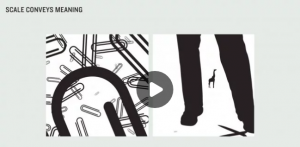After giving a few recommendations to an acquaintance about my favorite online learning platform, Lynda, I recently watched one of the courses I suggested called Interpersonal Communication. This course is taught by Dorie Clark, who teaches several other business communications courses.
I don’t always take notes, but this time I took a decent amount. I am hoping that re-writing them on my blog, this will help me remember in the moment. (It also helps me throw away some of the papers piling up on my desk.)
9 Notes on Interpersonal Communication
1. How to Make Requests Effectively
Dig your well before you’re thirsty.
- Invest in favors before making them.
- Explain the context of your request.
- Acknowledge you’re requesting a favor. “Thank you for the favor.”
- Indicate where your interests are aligned.
- Express genuine gratitude.
2. Communicating by Phone or Email?
 If it’s a boss or power broker, do they have an opinion or a preference about which they prefer? If so, choose what they prefer. Otherwise, some tips on email vs phone, and benefits of each:
If it’s a boss or power broker, do they have an opinion or a preference about which they prefer? If so, choose what they prefer. Otherwise, some tips on email vs phone, and benefits of each:
Benefits of Email
- Simple information
- Different time zones, travel, late at night
- Dealing with a talkative person
Benefits of Phone
- Brainstorming or Troubleshooting
- Emotional conversation
3. How to Interpret Non-Verbal Cues and What to Watch Out for In Yourself:

- (Micro) Expressions of contempt (especially those brief expressions in yourself)
- Open vs Closed body language
- Check the direction of the feet; where are they pointed
- Mismatched facial expressions
4. Communicating with Your Supervisor
Manage expectations by ranking projects.
Get the guidance you need:
- Have a conversation about how to have conversations. [WARNING] – This will be uncomfortable.
- Develop an emergency plan, on what to do when your supervisor cannot be reached.
- Create an operating manual for your job.
Ask the right questions:
- What can I do that’s most helpful for you right now?
- How can I prioritize that?
- Do you see anything that I’m missing?
5. Meetings
Notes on when to speak up in meetings and when to listen:
- Listen when you don’t know the context
- Listen when you don’t have a strong opinion
- Speak when you have relevant experience
- Speak if you have useful resources
- Speak if you do have a strong opinion
- Speak if you have key questions
6. Managing Tricky Communications
Can occur in cross-cultural scenarios when some culture explain things with direct language and some use indirect. Ex: Germany (direct), the US (mostly direct), and Japan (indirect).
In addition, some cultures are very formal and others are more informal. Ex: In the US, using an honorific title like Director or Chairman to refer to someone is way too formal, but some countries it’s standard.
Reference to work done by Andy Molinsky.
7. Interpreting Interruptions
- Why are they interrupting?
- Do they want more detail?
- Is it a culture of interruptions or just one person?
Solutions
- Talk one on one: Bob, you interrupted me 3 times. If Bob protests: I’m sure you didn’t intend it, but my impression was that you interrupted me 3 times.
- Change the system: Talk to your manager and take note. Choose an interruption monitor for meetings. Ask meeting organizers to stop interruptions.
8. Responding to Critical Feedback
The most important rule is: know who to take feedback from! There are only two sources of feedback:
- Your boss (or client or professor).
- Anyone you ask for feedback.
If it’s anyone else, their opinion is not important.
Other Tips:
- Don’t respond immediately to feedback. Give yourself time to reflect.
- If you’re worried about negative feedback: Think of worse-case scenarios between you and your boss. Write down possible criticisms and then your solutions.
9. Communicating as an Introvert
The office is optimized for extroversion, but you can play to your strengths:
- Get an agenda before the meeting and share your thoughts in written format (even before the meeting).
- Get a friend to advocate for you, and you can advocate for an introvert.
- Try creating talking points
- Create challenges: Ex: “I’m going to be the first to speak up.”
- Do more pre-work.
Conclusion
If you’re interested in this course, here’s an overview:
Communicating effectively isn’t an innate talent that some people have and others don’t—it’s something that anyone can learn and practice. In this course, learn strategies that can help you hone and master your interpersonal communication skills.
Join personal branding and career expert Dorie Clark as she shares techniques for getting your message across effectively in the workplace, and explains how to tackle potential communication challenges with your colleagues and supervisor. She also discusses how to grapple with tricky situations, taking you through how to handle interruptions, respond to critical feedback, and communicate across cultures.
This course was released 6/13/2017 and rated “Beginner” skill level. So fairly recent and open to everyone. Also it’s only 37m 7s, so easy to fit into a day.
I saw a few more courses I didn’t know about on her author page, about how to hold yourself accountable and body language for women — also around 30 minutes. Maybe I’ll take those and write more notes.













